Would you like variety in your plant collection, but the green thumb is not quite mature yet? Then peperomies are just the thing for you.
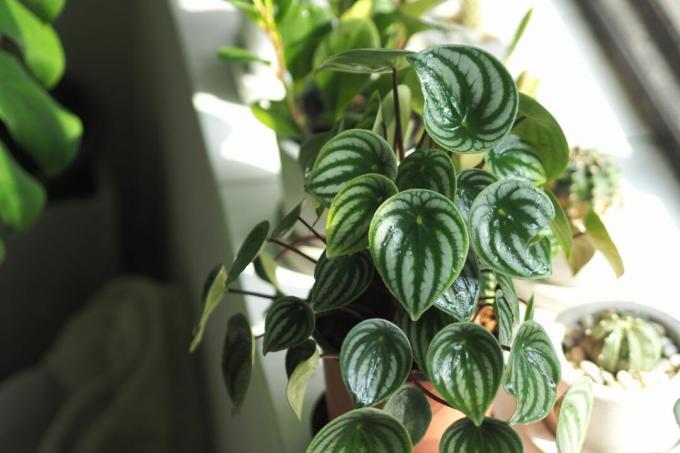
With a large number of types and varieties, it is often difficult to decide. Since peperomias are very small, you can put several next to each other without any problems. We have put together a small selection of the most beautiful types for you here.
contents
- Peperomia Species: How Many Are There?
-
The most beautiful Peperomia species at a glance
- Fleshy Dwarf Pepper (Peperomia obtusifolia)
- Round-leaved Peperomia (Peperomia rotundifolia)
- Raindrop ornamental pepper (Peperomia polybotrya)
- Wrinkled Dwarf Pepper (Peperomia carperata)
- Peperomia albovittata
- Watermelon perperomy (Peperomia argyreia)
- Pincushion Peperomia (Peperomia ferreyrae)
- Peperomia prostrata
Peperomia Species: How Many Are There?
The genus Peperomia is a very versatile and species-rich plant genus. These include 1500 to 1700 different species, which are mainly found in the tropics of South America, but also in Africa, Asia and Australia. Not all of the numerous
Peperomia-Species exist as indoor plants. However, some have also made it into our homes, where they inspire with their easy care and varied foliage. They are also commercially available as ornamental peppers or dwarf peppers.
The most beautiful Peperomia species at a glance
There is a wide range of species and cultivars of peperomias, many of which can also be grown as houseplants. the Care of the Peperomia is quite easy. Dwarf peppers with light-colored foliage generally require more light than dark-colored ones.
Tip: Many garden guides lump all types of dwarf peppers together. But as diverse as the species is, so can the needs. Peperomia are very forgiving of care mistakes, which is why it can give the impression that they can cope with all conditions. However, specific care ensures healthier plants that you will benefit from for a long time.
Fleshy Dwarf Pepper (Peperomia obtusifolia)
This meaty one Peperomia is probably the best known of the dwarf pepper species and is also called pepper face. Its leaves are ovate and thick, capable of storing water. The shoots grow upright and are also slightly fleshy. With the different varieties of Peperomia obtusifolia color is brought into the apartment.

- Peperomia obtusifolia ‘Variegata’: Has creamy white and green marbled foliage.
- Peperomia obtusifolia ‘Bohemian Bravour’: Has dark green, glossy leaves.
- Peperomia obtusifolia ‘Green Gold’: The foliage has a particularly high proportion of white or light green, so this variety should be a little lighter.
Care instructions for Peperomia obtusifolia:
High-quality potting soil such as ours is suitable as a substrate for this species Plantura organic universal soil, which does not contain peat and can store water for a long time. You can mix in 30% sand for more permeability. It is poured when the soil surface has dried. The location should be partially shaded.
Round-leaved Peperomia (Peperomia rotundifolia)
Due to its creeping growth form, the round-leaved dwarf pepper can be kept hanging, for example in a traffic light pot. The leaves of Peperomia rotundifolia are, as the name suggests, round, small and of a fleshy consistency.
Care instructions for Peperomia rotundifolia:
A partially shaded location is ideal for this species. It feels good in high-quality soil for indoor or potted plants and tolerates neither waterlogging nor drought. So always water when the surface of the substrate feels dry.
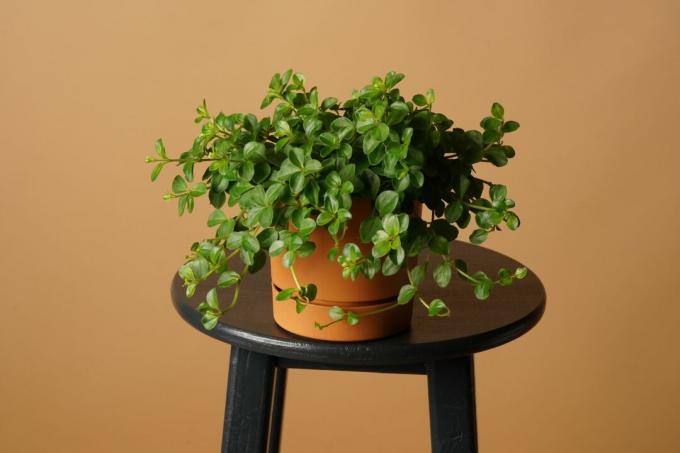
Raindrop ornamental pepper (Peperomia polybotrya)
The large, heart-shaped leaves of the Peperomia polybotrya immediately show where the species got its name from. The foliage is reminiscent of thick raindrops due to the pointed tip of the leaf and is therefore an absolute eye-catcher in the apartment. The leaves are dark green and shiny like varnish.
- Peperomia polybotrya ‘Variegata’: With variegated leaves in light and dark green.
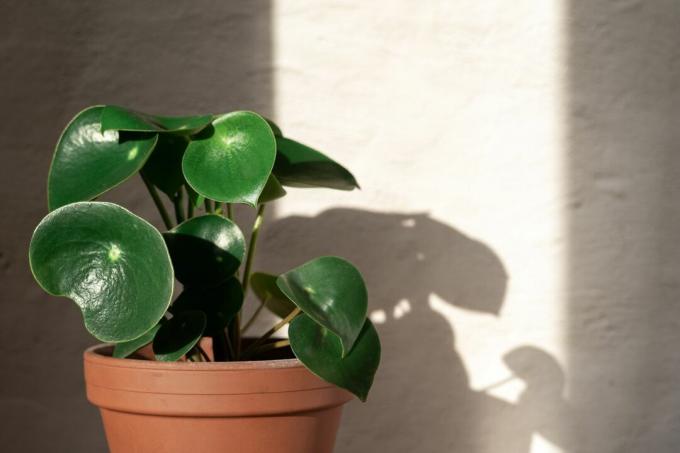
Care instructions for Peperomia polybotrya:
A loose, structurally stable substrate, such as ours Plantura organic universal soil, is best suited for this species. Our organic soil does not require peat and consists of natural ingredients. Ask the Peperomia in a semi-shady place with morning or evening sun and water regularly so that it does not dry out or become waterlogged.
Wrinkled Dwarf Pepper (Peperomia carperata)
Comes with slightly smaller but similarly shaped leaves to the raindrop ornamental pepper Peperomia carperata therefore. The highly structured surface of the leaves gives them an interesting appearance.
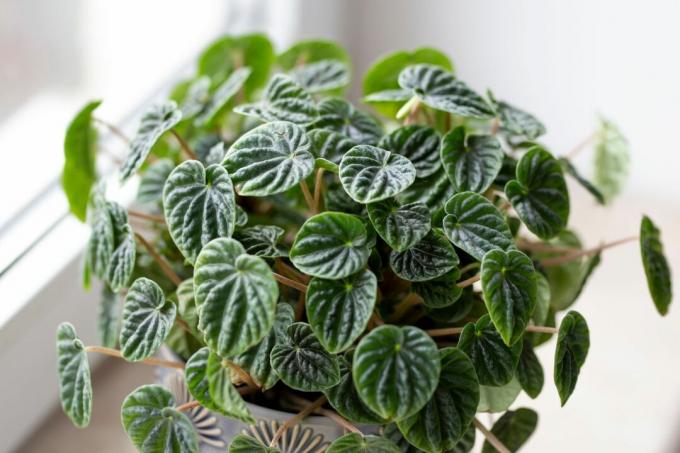
- Peperomia carperata ‘Luna Red’: With dark red colored foliage.
- Peperomia carperata ‘Pink Lady’: Has pink and light green marbled leaves.
- Peperomia carperata ‘Abricos’: Here the leaves are colored pink only at the edge and dark green in the middle.
Care instructions for Peperomia carperata:
For a suitable substrate, mix a peat-free universal soil with 30% sand or clay granules. When watering, the right amount is required, because the soil should neither dry out nor be wet.
Peperomia albovittata
This species also has heart-shaped leaves with a light surface structure. The red shoots, which are particularly effective in green-leaved varieties, are particularly eye-catching. Peperomia albovittata grows upright and can be solid or patterned.
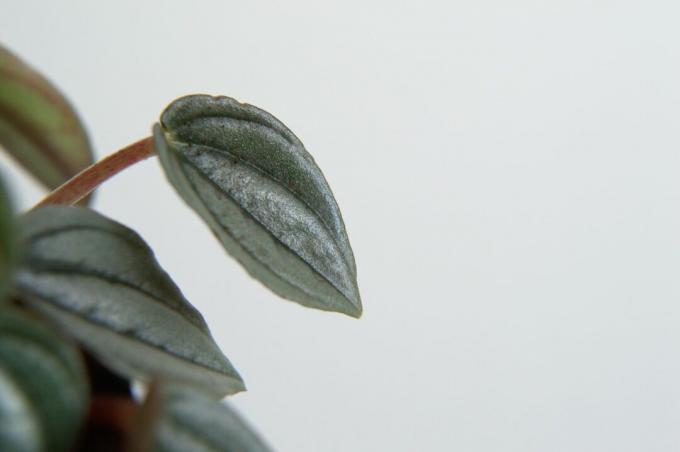
- Peperomia albovitatta ‘Piccolo Banda’: The leaves are dark red and green striped.
- Peperomia albovitatta ‘Rana verde’: Translated to mean 'green frog', it has bright green, unicolored leaves.
Care instructions for Peperomia albovittata:
This species likes to stand in permeable green plant soil or in a cactus substrate. It requires slightly more water than most other species and should be watered regularly so the substrate is consistently moist. However, waterlogging is not tolerated.
Watermelon perperomy (Peperomia argyreia)
Reminiscent with its silvery-green striped, round and pointed leaves Peperomia argyreia closely resembles the exterior of a watermelon. As in Peperomia albovittata the shoots of the watermelon pepper are also red and grow upright.
Care instructions for Peperomia argyreia:
The substrate for the watermelon Peperomia must be permeable. Mix 30% sand under a good quality, peat-free substrate to further increase permeability. The soil is allowed to dry out until the next watering.
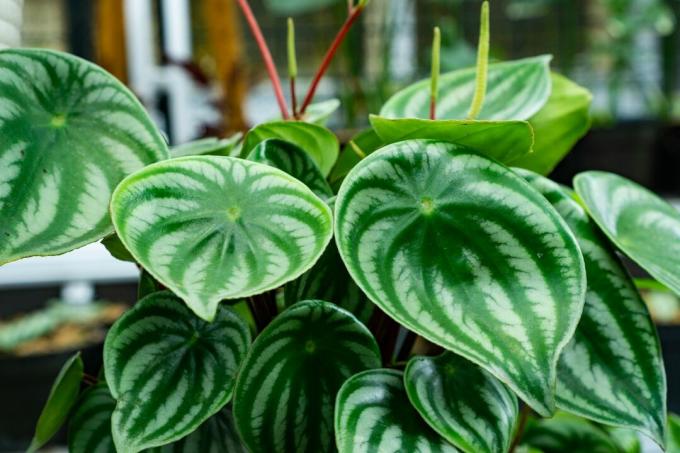
Pincushion Peperomia (Peperomia ferreyrae)
The upright shoots of Peperomia ferreyrae are densely leafed. Their foliage has a completely different shape than that of the species mentioned above. The leaves are narrow, elongated and curled, giving them an unusual appearance.
- Peperomia ferreyrae ‘Happy Beans’: The leaves of the Peperomia 'Happy Bean' are light green and their shape is reminiscent of beans.
Care instructions for Peperomia ferreyrae:
The pincushion Peperomia needs a particularly permeable substrate. Either mix 30% pumice, universal soil and sand or use a special mix for cacti. Let the substrate almost dry out between waterings.

Peperomia prostrata
Due to the small, round leaves, this dwarf pepper is similar to Peperomia rotundifolia. However, their leaves are even smaller and can be patterned or monochromatic. They sit on long red shoots, through which this dwarf pepper can also be held hanging.
- Peperomia prostrata ‘Pepper spot’: The round, green leaves of the Pepperomia 'Pepperspot' sit like small dots on the red shoots.
Care instructions for Peperomia prostrata:
With this species, too, the substrate is allowed to dry out before it is poured again. The soil must be permeable. Increased permeability can be achieved, for example, by mixing a universal soil with 30% sand.

Tip: If you regularly feed your peperomias between spring and autumn with a small amount of liquid fertilizer such as our Plantura organic indoor and green plant fertilizer provide, you get healthy and lush plants with lush green leaves, which are a guaranteed eye-catcher in every apartment. You can easily add our fertilizer directly into the soil via the irrigation water, where the nutrients are quickly available to the plants.
In our top 10 easy-care houseplants you will find suggestions as to which species you can use to further enrich the green variety in your home.


